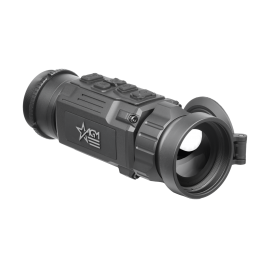
This product is not exportable outside the United States.
By adding this item to cart, you agree and acknowledge the Export Policy and confirm that you are a person in the United States with no intentions to illegally export the device.
This product is not exportable outside the United States.
By adding this item to cart, you agree and acknowledge the Export Policy and confirm that you are a person in the United States with no intentions to illegally export the device.


0

0


Night hunting has seen a surge in popularity over the past decade, driven largely by advancements in thermal optics technology. With thermal scopes becoming more affordable and widely available, the predator and varmint hunting game has been revolutionized. However, the abundance of options can be overwhelming, especially for newcomers. One of the most common questions is: should you opt for a thermal scope or a thermal clip-on? This article aims to provide a comprehensive comparison to help you make an informed decision.

Design and Mounting System: Dedicated thermal scopes, like those offered by AGM Global Vision, are designed as standalone optic systems for rifles. They come equipped with a Quick Detach (QD) mount, an eyepiece, button layout, front focus ring, and software for zeroing profiles, reticle choices, and other settings.
Price Ranges: The cost of thermal scopes varies widely, depending on resolution, lens size, and features. Prices range from approximately $1,000 for lower-resolution models to $5,000 for high-resolution, feature-rich options.
Key Features and Pros:
Drawbacks:
Resolution and Picture Quality: Dedicated thermal scopes offer higher resolution options, often with larger lens sizes for better base magnification and clearer images at longer distances.

Design and Mounting Systems: Clip-on thermal optics are designed to convert daytime scopes into thermal scopes. They can be mounted using adapters that clamp onto the objective lens or rail-mounted in front of the daytime scope.
Price Ranges: Clip-on thermals are comparable in price to dedicated thermal scopes, ranging from $1,000 to $5,000. However, clip-ons allow users to utilize their existing rifle setups, potentially reducing overall costs.
Key Features and Benefits:
Drawbacks:
Resolution and Picture Quality: Clip-ons are available in various resolutions, from 256 models to 640 resolution options. Larger lens sizes offer better base magnification but narrower fields of view.
Magnification Limitations: When using a clip-on with a high-powered optic, the magnification capabilities of the thermal clip-on are the limiting factor. For instance, a 5-25x scope with a clip-on will not achieve 25x thermal magnification; increasing the magnification merely zooms into the thermal screen, resulting in pixelation.
Recording Capabilities: Most AGM Rattler clip-ons include onboard recording, though some models, like the StingIR, do not.
The choice between a thermal scope and a clip-on largely depends on your application:
AGM Global Vision stands out by providing high-quality thermal optics with versatile options to suit various needs. Our content aims to solve common problems and meet customer needs that competitors may overlook. By offering comprehensive guidance and superior products, we strive to enhance your night hunting experience.
Both thermal scopes and clip-ons have their unique advantages and potential drawbacks. Understanding these differences can help you make an informed decision based on your specific needs and preferences. Whether you choose a dedicated thermal scope or a clip-on, AGM Global Vision provides top-tier options to enhance your night-hunting capabilities.
For more detailed information and a hands-on comparison, check out our YouTube video where we discuss this topic in-depth.
Modified: May 02, 2025 | 06:52 am

Sold out

$3,295.00

$4,395.00

$3,645.00
Table of contents
Featured Articles
Discover the critical role of base magnification in thermal scopes for night hunting. Learn how to optimize your scope for target identification, fiel..